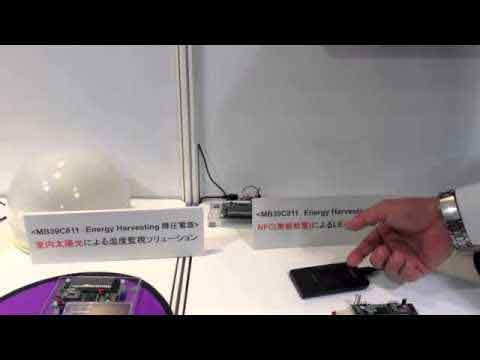Attila Strba, Research & Development, EnOcean GmbH
 This paper deals with the design approach for embedded systems with limited power resources. The focus is on embedded systems powered purely by energy harvested from the surroundings. Realtime operation and power consumption are critical design aspects of these systems. A number of design problems are discussed and solutions are presented.Selected products are looked at as examples of successful implementation of the solutions.
This paper deals with the design approach for embedded systems with limited power resources. The focus is on embedded systems powered purely by energy harvested from the surroundings. Realtime operation and power consumption are critical design aspects of these systems. A number of design problems are discussed and solutions are presented.Selected products are looked at as examples of successful implementation of the solutions.
Significant advances in microelectronics technology made the increasing miniaturization of embedded systems possible. This trend to miniaturization began in the late 1960s and, as stated by Moore’s Law that the power of microprocessors doubles about every 18 months, has held true with astonishing accuracy and consistency until the beginning of the 21st century. An announcement like that by IBM concerning the use of 29.9 nm technology to print circuits indicates that this trend will continue for a number of chip generations.
The trend is leading to and will result in the development of tiny embedded systems, integrated into more and more everyday objects. And will create a world of smart devices surrounding us. For example, parents will no longer lose track of their children, even in the busiest crowds, when location sensors and communication modules are sewn into their clothes. Similar devices attached to timetables and signposts could guide blind or foreign people in unknown environments by talking to them.
Another interesting possibility offered by such technology would be the creation of intelligent homes where a refrigerator can detect old food, a washing machine can query the instructions for dirty clothes, or window and door handles indicate whether they are open or closed. This concept called ambient intelligence, where humans have computing and networking technology embedded in their surroundings, was developed by the ISTAG advisory group.
While this vision may sound utopian when you first hear about it, current technology is already at a stage where it is possible to realize it. Ambient intelligence requires that there be thousands of tiny embedded devices in the environment. Each of these devices require some source of power for it to function. While power can be sent to them through cables or batteries, neither of these possibilities offers an effective and longterm solution. The large number of these devices makes it highly desirable that they be fully self-sustaining and service-free. This can be achieved by harvesting energy from the environment.
Energy harvesting is a way of using the omnipresent sources of energy in our surroundings, like from moving objects, vibrating machine parts, temperature changes, electromagnetic waves such as light, radio or infrared. The idea is not new, but successful and low-cost realization in embedded systems calls for the right expertise. A specific design approach is needed for embedded systems fulfilling the concept of ambient intelligence.






